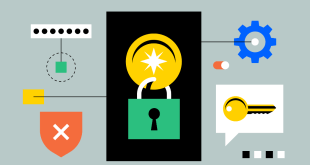In the ever-evolving digital landscape, website security is of paramount importance. Users expect their personal data to be protected, and search engines favor secure websites. In this comprehensive guide, we delve into the world of HTTPS implementation with Multi-Party Computation (MPC), an advanced cryptographic technique that enhances security while preserving privacy. Let’s embark on this journey to fortify your website with cutting-edge security measures.
Understanding HTTPS and Its Working
HTTPS (Hyper Text Transfer Protocol Secure) is the secure version of HTTP, encrypting data during transmission between a user’s browser and the web server. Implementing HTTPS on your website ensures that sensitive information, such as login credentials and credit card details, remains encrypted and safe from potential eavesdroppers. Google and other search engines highly value HTTPS-enabled websites, ranking them higher in search results.
The Need for Multi-Party Computation (MPC)
MPC is a groundbreaking cryptographic concept that allows multiple parties to compute a function cooperatively without sharing their individual inputs. It ensures that no party can learn anything about the inputs of others, making it a powerful tool for secure data processing. By integrating MPC with HTTPS, you achieve an additional layer of security, as private information remains protected even during data computations.
Obtaining an HTTPS Certificate
To enable HTTPS on your website, you need an SSL/TLS certificate. The certificate is issued by a Certificate Authority (CA) and contains your website’s public key, allowing encryption and decryption of data. There are several types of certificates available, including Single Domain, Wildcard, and Extended Validation (EV) certificates. Choose the one that suits your website’s requirements.
Step-by-Step Implementation of HTTPS with MPC
Assessing Website Requirements
Before beginning the implementation process, analyze your website’s structure and functionality. Identify areas that handle sensitive user data, such as login pages, payment gateways, and contact forms. Prioritize these sections during the HTTPS and MPC integration.
Choosing the Right Certificate
Select an appropriate SSL/TLS certificate based on your website’s needs. Consider factors like the number of subdomains, the level of validation required, and the warranty coverage. A reliable certificate ensures enhanced security and user trust.
Installing the SSL/TLS Certificate
Follow the CA’s instructions to install the SSL/TLS certificate on your web server. This process varies depending on your server’s configuration (e.g., Apache, Nginx, IIS). Double-check the installation to avoid any certificate-related errors.
Configuring HTTPS on Your Website
Update your website’s code and configuration to support HTTPS. Ensure that all internal links, resources, and assets use the secure “https://” protocol. Implement HTTP to HTTPS redirection to maintain a consistent and secure user experience.
Testing and Troubleshooting
Thoroughly test your website’s functionality after HTTPS implementation. Check for any mixed content issues and fix them to ensure all elements are loaded securely over HTTPS. Use online tools like SSL Labs’ SSL Server Test for a detailed analysis of your SSL/TLS configuration.
Introducing Multi-Party Computation
Work with a qualified cryptographer or a security professional to integrate MPC into your website’s data processing pipelines. This may involve modifying the existing code or using specialized libraries that support MPC protocols.
Verifying Privacy and Security
Conduct rigorous testing to ensure that the MPC implementation preserves privacy and security. Validate that data inputs are protected and computations are performed correctly across multiple parties.
Final Words
Implementing HTTPS with Multi-Party Computation is an essential step towards safeguarding your website and user data from potential cyber threats. By fortifying your website with cutting-edge security measures, you build trust among users and search engines, leading to improved rankings and enhanced user experience.
Commonly Asked Questions
Q1: Is HTTPS necessary for all websites, even if they don’t handle sensitive data?
A: Yes, HTTPS is essential for all websites, as it encrypts data transmission, enhances security, and improves search engine rankings, regardless of the type of content.
Q2: What are the benefits of using Multi-Party Computation with HTTPS?
A: MPC adds an extra layer of security by allowing secure data processing without revealing individual inputs, ensuring privacy during computations.
Q3: Can I obtain a free SSL/TLS certificate for my website?
A: Yes, some CAs offer free SSL/TLS certificates, but they usually come with limitations. Paid certificates provide better features and support.
Q4: Are there any performance implications of implementing HTTPS and MPC?
A: Initially, there may be a slight performance overhead due to encryption and decryption processes. However, modern hardware and optimized implementations minimize the impact.
Q5: How frequently should I renew my SSL/TLS certificate?
A: SSL/TLS certificates typically have a validity period of 1 to 2 years. Renew your certificate before it expires to maintain uninterrupted security.
 webfily
webfily



